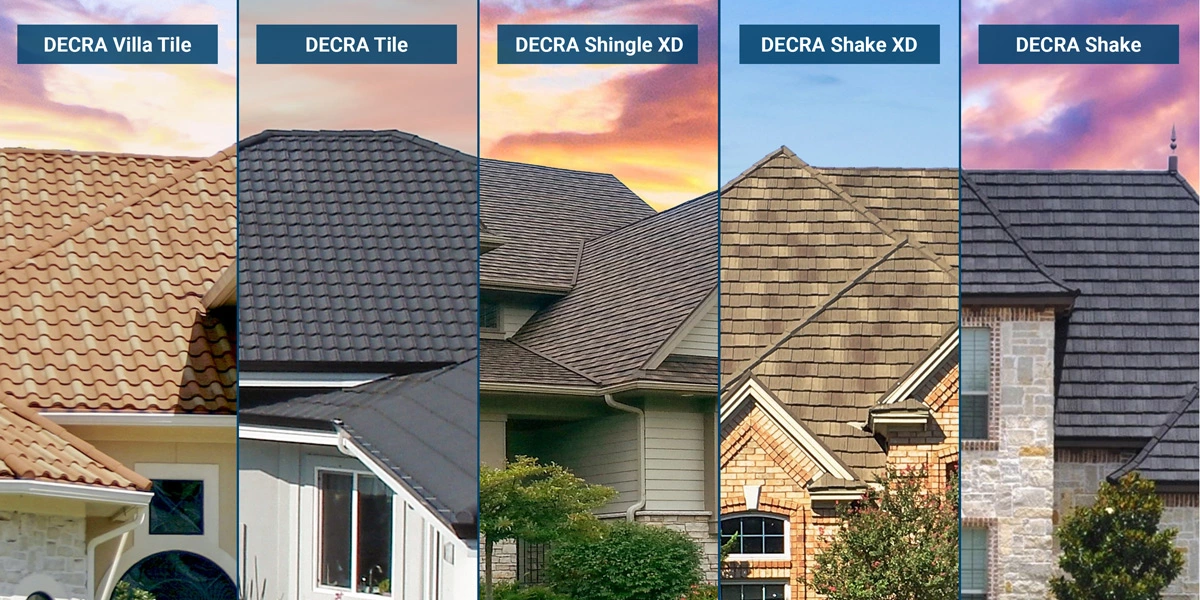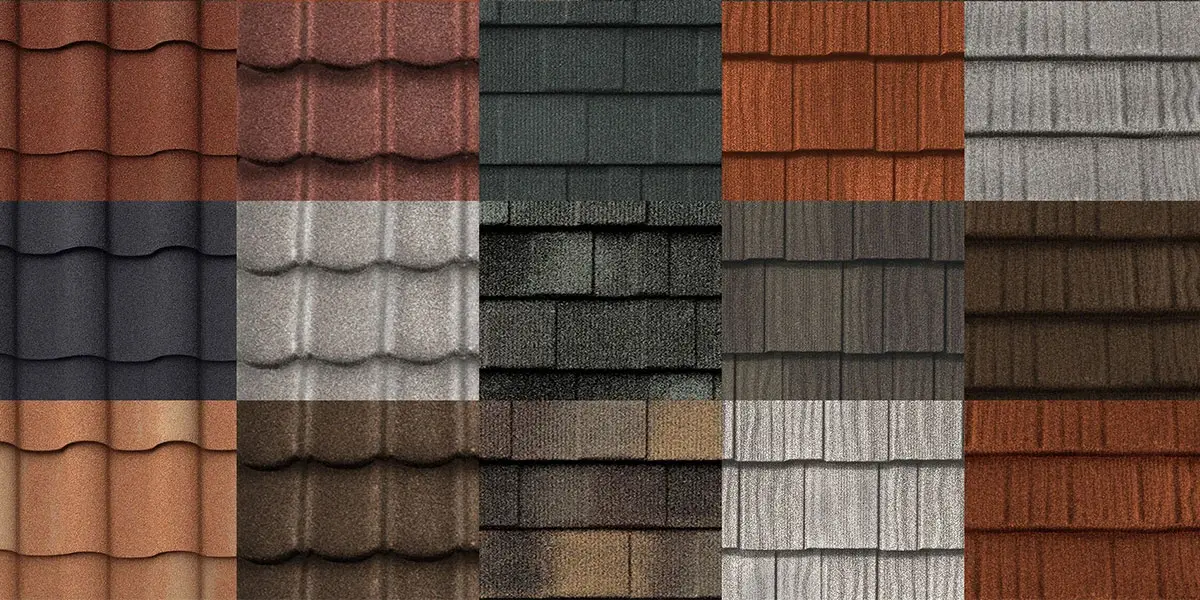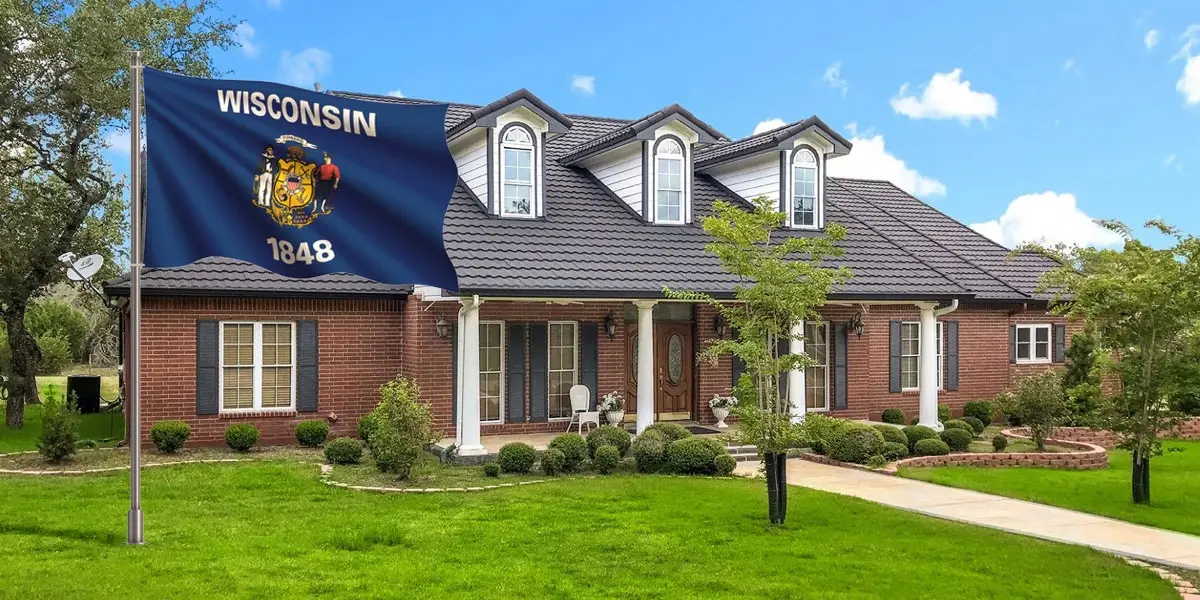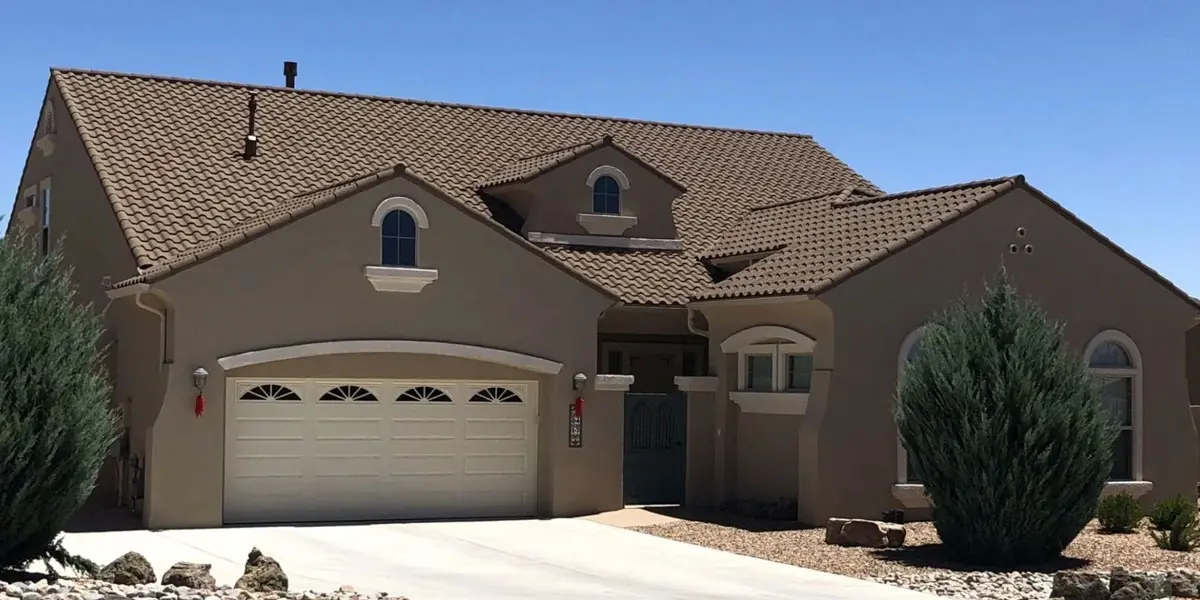If you’re reading this blog, chances are you’re considering a new roof–but not just any roof. You want the best roofing material on the market, one that provides long-lasting protection for your home.
That’s where metal roofing, particularly DECRA, comes into play.
In this blog, we’ll cover:
- The pros and cons of common roofing materials
- How metal roofing compares to traditional options
- The many benefits of choosing metal roofing for your home
If what you learn about metal roofing resonates with you and seems like the right fit for your property, DECRA makes it easy to take the next step. You can request a sample or try out our visualizer tool to see how it could look on your home.
Let’s dive in.
The Pros and Cons of Common Roofing Materials
Asphalt Shingles
Asphalt shingles make up the largest share of roofing materials due to their lower cost and widespread availability. They’re also easy for roofing contractors to install, requiring no specialized skills.
However, their market share is expected to decline over the next three years as homeowners increasingly turn to more durable roofing options.
Key concerns with asphalt shingles include:
- Short Lifespan: Asphalt shingles last about 12 to 20 years, which is relatively short. In areas with extreme weather, they may need to be replaced even sooner.
- Weather Vulnerability: Harsh weather can cause asphalt shingles to crack, warp, and degranulate, reducing their ability to protect your home.
- Heat Absorption: Asphalt shingles tend to absorb heat, making it harder to cool homes in hot climates and driving up energy costs.
- Environmental Impact: As a petroleum-based product, asphalt shingles contribute to landfill waste, with millions of tons discarded annually. They’re better suited for budget-conscious roofing projects where longevity and durability aren’t top priorities.
Key Takeaways: Asphalt shingles may be suitable for budget-conscious homeowners, but they fall short in terms of durability and sustainability compared to other options.
Wood Shingles and Shakes
Before asphalt shingles became widespread, wood shingles were the go-to roofing material. While they add charm to rustic homes and buildings, their appeal today is largely aesthetic.
Wood roofs come with several performance issues, making them less practical. Key concerns include:
- Fire Risk: Unless treated with fire-resistant coatings, wood roofing is highly flammable, making it a poor choice for fire-prone areas.
- Expensive Upkeep: Maintaining a wood roof can be costly, with frequent repairs and treatments needed to address wear from decay and infestation.
- Moisture Sensitivity: Wood shingles are susceptible to moisture damage, which can lead to rotting, warping, or mold growth, especially in humid climates.
- Inconsistent Appearance: Over time, wood can weather unevenly, leading to a patchy or inconsistent look that might detract from the overall aesthetic of your home.
Key Takeaways: While wood shingles and shakes offer a classic look (if they weather evenly), they’re difficult to maintain and present a fire hazard.
Clay or Concrete Tiles
Another roofing material you’ll come across in your search is clay or concrete tile roofs. Common for Mediterranean or Spanish-style buildings, these roofs are made from molded clay, terracotta, or concrete, and then baked at a high temperature. While they offer a distinct style, the ongoing maintenance required can be a drawback.
Other challenges homeowners should be aware of when it comes to tile include:
- Weight: Clay and concrete tiles are much heavier than other roofing materials, requiring extra structural support. This can increase installation costs and time.
- Fragility: Clay and concrete tiles are among the most fragile roofing materials. They’re prone to cracking from routine maintenance, or when struck by heavy objects like tree branches or hailstones.
- Maintenance: Repairing cracked or broken tiles can be costly and time-consuming. Additionally, concrete tiles may need periodic sealing to prevent moisture absorption and algae growth.
- Color Fading: Over time, the color of clay and concrete tiles can fade from UV exposure, especially in sunny climates, requiring maintenance to preserve their original look.
Key Takeaways: While clay and concrete tiles are aesthetically appealing, they come with high maintenance needs and a tendency to crack easily.
How Does Metal Roofing Compare to Traditional Roofing Options?
Metal roofing is gaining popularity for its exceptional durability and longevity, making it a smart investment for homeowners seeking reliable protection for their property.
However, it’s important to recognize that metal roofs can be made from various materials, including aluminum, copper, and steel. Understanding the differences between these options is essential when evaluating the best type of metal roofing for your needs, as each material comes with its own set of considerations.
Drawbacks of Aluminum and Copper Metal Roofs:
- Noisy: A common misconception about metal roofing is that it’s noisy during rain. While an uncoated aluminum sheet on a barn or shed can be noisy, modern metal roofing products designed for residential and commercial properties are engineered to minimize sound, making them much quieter in comparison.
- Color Fading: Aluminum roofing is more prone to color fading over time due to sun exposure, requiring periodic repainting or finishing.
Drawbacks of Stone-Coated Metal Roofs (roofs made from steel sheets):
Higher Upfront Cost: Stone-coated metal roofing is slightly more expensive to install than other roofing materials, but the long-term benefits, including its extended lifespan, make it a worthwhile investment.
As you can see, the drawbacks are few when it comes to stone-coated metal roofing. We touch on more of the benefits in the next section.
The Benefits of Stone-Coated Metal Roofing
As weather patterns become more unpredictable, many homeowners are turning to metal roofing to protect their families and investments. The reason they choose metal roofing is simple: it outperforms traditional materials in both durability and longevity.
Here’s how it stands out:
- Longer Lifespan: Metal roofs can last between 40 and 80 years. That’s significantly longer than asphalt shingles, which typically need replacing every 12 to 20 years.
- Impact Resistance: DECRA Metal Roofs are warrantied for hailstones up to 2.5 inches in diameter.
- High-Wind Performance: Rigorously tested to meet High-Velocity Hurricane Zone (HVHZ) requirements—including Broward and Dade Counties—DECRA Metal Roofs are warranted for winds up to 120 mph.
- Fire Protection: With a Class 4 Fire Rating, DECRA Metal Roofs provide the highest level of fire protection recognized by Underwriters Laboratories.
Metal roofing is also lighter than traditional materials, eliminating the need for extra structural support. Plus, its superior strength-to-weight ratio makes it an ideal for earthquake-prone areas.
Beyond durability, metal roofing offers financial benefits that make it a smart investment:
- Energy Efficiency: Metal roofing reflects sunlight rather than absorbing it, helping homeowners in warm climates save up to 40% on energy costs.
- Low Maintenance: Unlike other materials, metal roofing doesn’t require costly resealing or frequent cleaning.
- Insurance Savings: Many insurance companies offer discounts for homes with metal roofs due to their lower risk of damage.
- Higher Resale Value: A metal roof can increase property value by up to 6%, and homeowners can recoup 60–85% of the installation cost.
Request a Complimentary Sample
Now that you understand the benefits of metal roofing, you might be wondering–does it look as good as other roofing options? The answer is yes (if not better)!
DECRA metal roofing is available in a wide range of colors and textures to complement your home’s exterior. With shake, shingle, and tile profiles that replicate the look of traditional materials, you’re sure to find a style that gives you the classic look you love, with the added benefits of modern metal roofing.
To see it for yourself, we encourage you to request a complimentary sample. A DECRA Metal Roofing Advisor will assist you in finding the perfect match and answer any questions you have about the product. While you wait, be sure to check out our gallery or use the visualizer.
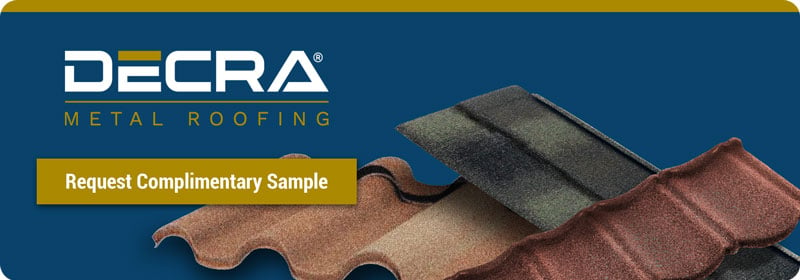
Editor’s Note: This blog was originally published in June 2022, but has been updated with relevant information.

